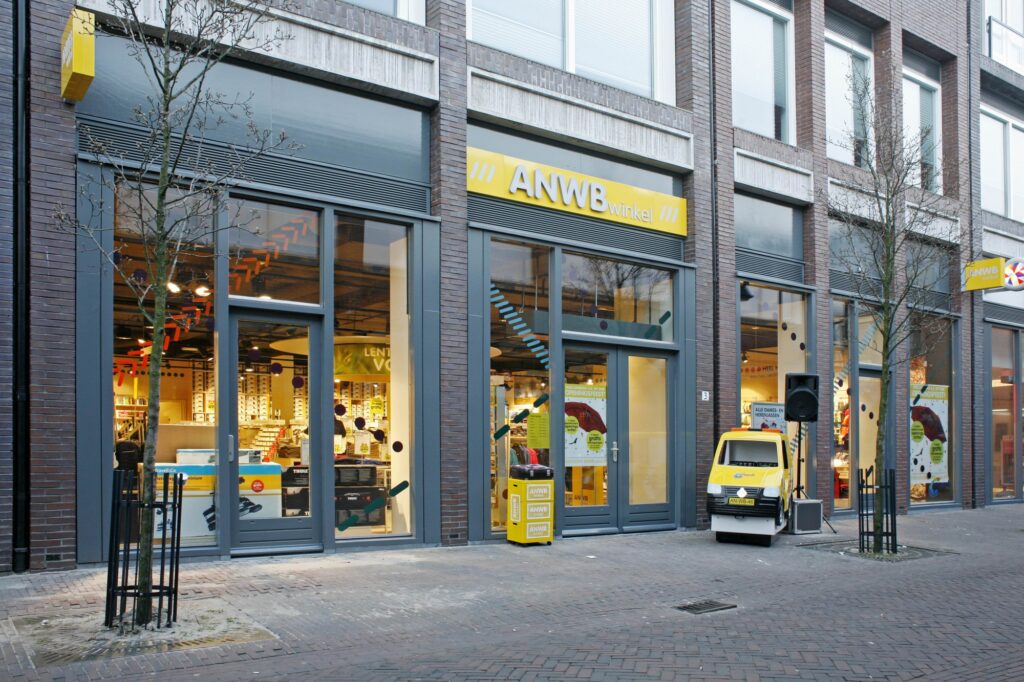

EPCs for buildings and EED audit: killing two birds with one stone for ANWB
With the introduction of the EED audit requirement, many large companies have recently been faced with an enormous task. One of them is the Royal Dutch Touring Club, ANWB, with no fewer than 110 buildings (including offices, alarm centres and shops) that suddenly had to be subjected to an EED audit. By bundling individual audits and grouping the properties in a smart way, we helped ANWB keep the project manageable.
The EED audit
Almost all large companies and institutions have an EED energy audit obligation. With this, Europe is trying to make companies aware of their energy consumption and of the possibilities of saving energy. The EED audit first looks at the measures that have a payback period of 5 years (and which in many cases are, consequently, mandatory). The next step is to look for savings measures that can also bring substantial savings in euros and/or CO2 reductions.
Efficiency through smart grouping
Going over 110 different sites with a fine-toothed comb seems like a daunting task – and it was. But we knew that despite the big differences between the various buildings, there were also important similarities. Besides the fact that some of the buildings were similar in terms of function, many also could be grouped into the same category in terms of energy consumption and EPCs. On the basis of these similarities, the shops and roadside assistance locations could be divided into different groups. This meant that we could opt for an audit on the basis of 27 randomly selected sites, rather than scanning all 110 premises individually.
Building EPCs and EED audit: killing two birds with one stone

The EED audit must be carried out every four years, but there are more laws and regulations that large companies must comply with. In addition to the EED audit obligation, from 2023 office buildings will also be required to qualify for at least an EPC C — reason enough for ANWB to combine these projects.
Not all of ANWB’s office buildings had an EPC yet, and with just a little extra effort all the information needed for both the EED audit and the EPCs could be obtained. By combining the inventory for the EPCs with the EED audit, ANWB on the one hand gained insight into the current EPCs of thair buildings, and on the other, were given a step-by-step plan for increasing the sustainability of its buildings to EPC C or EPC A.
From EED audit to sustainable buildings
The audit enabled ANWB to save energy and reduce energy costs by as much as 14%. The audit showed that ANWB had already reduced CO2 emissions by 13% in the last four years. In the coming years, they can reduce energy use by 19% through active energy monitoring, optimising the building ventilation and installing LED lighting. In addition to these measures, the move from the current head office to the yet-to-be-built new premises in The Hague is an important step towards further reductions. Sustainability is a major aspect of this new construction project.
From EED audit to Paris Proof

The EED audit is an ideal starting point for subsequent steps to increase sustainability. Have you just passed the EED audit, like ANWB? Then it’s time to look ahead. Below, we highlight 5 follow-up steps you can take towards Paris Proof.
Five follow-up steps to increase sustainability
- EPCs for buildings
Saving energy saves money and increases the value of buildings. An energy scan on location, identifies and analyses the possibilities for increasing sustainability, and results in an action plan to get there. It gives you an easy way to see what measures you can take to improve the EPC of your buildings. - Energy management
By monitoring your energy consumption intensively and continuously, you can significantly reduce your energy consumption. Wastage is quickly detected and installations are optimised with the help of energy management. This way, you not only reduce your energy costs, but also contribute to a sustainable world and the achievement of the Paris Proof ambition. - Roadmap
Under Paris Proof Real Estate, we have committed ourselves to a substantial CO2 reduction, namely 49% in 2030 and 95% in 2050. To get there, drawing up a roadmap can help. It is a tool that shows you a picture of your real estate portfolio and allows you to map out your own savings potential, per building and per year. The great advantage of this is that it gives you insight into your personal property portfolio and the potential for savings. - BREEAM
BREEAM is a method for integrally determining the sustainability of real estate. This is done according to an international standard based on nine different categories. The BREEAM Quickscan provides insight into the measures and associated investments required to make your building sustainable. Then you can then show the world that your building is sustainable with a BREEAM certification. - WELL
Sustainability, circularity and healthier buildings: these are increasingly important themes. Health is a relative newcomer on list, but is growing enormously in popularity. And it makes sense, because healthier buildings lead to lower absenteeism due to illness and higher productivity. Do you want to know the measures that will have the greatest effect without costing you a lot of money and time? A WELL Quickscan helps you identify them. But the international WELL Building Standard as a certification can also be attractive for your company and/or your buildings.
Would you like to become more sustainable and save energy just like ANWB, but don’t know where to start? Don’t hesitate to contact us. We are ready to talk you through defining your objectives and translating them into an attractive business case. This is the most cost-effective way to prepare your real estate for the Paris Proof Ambition.






